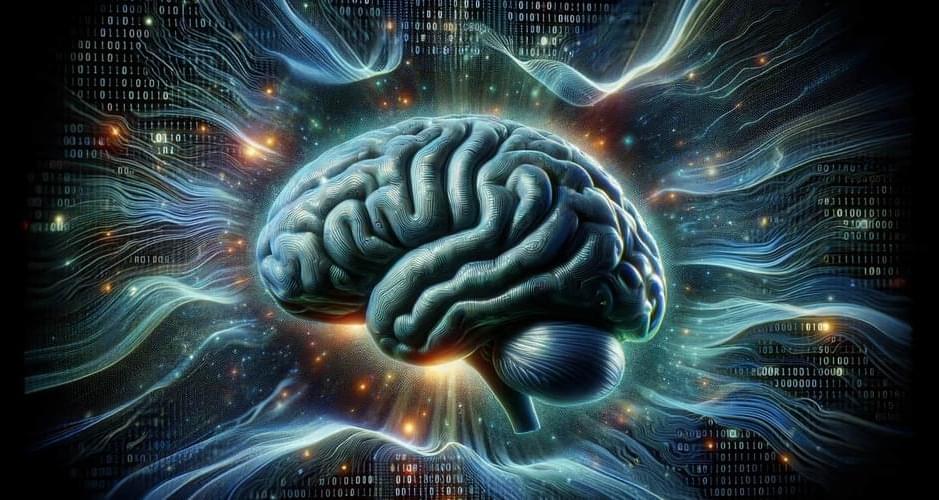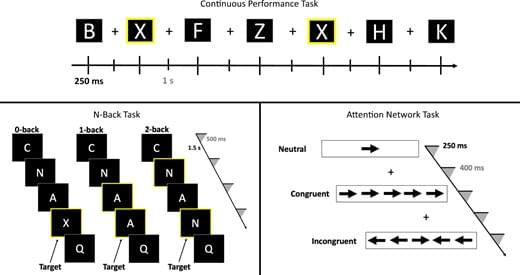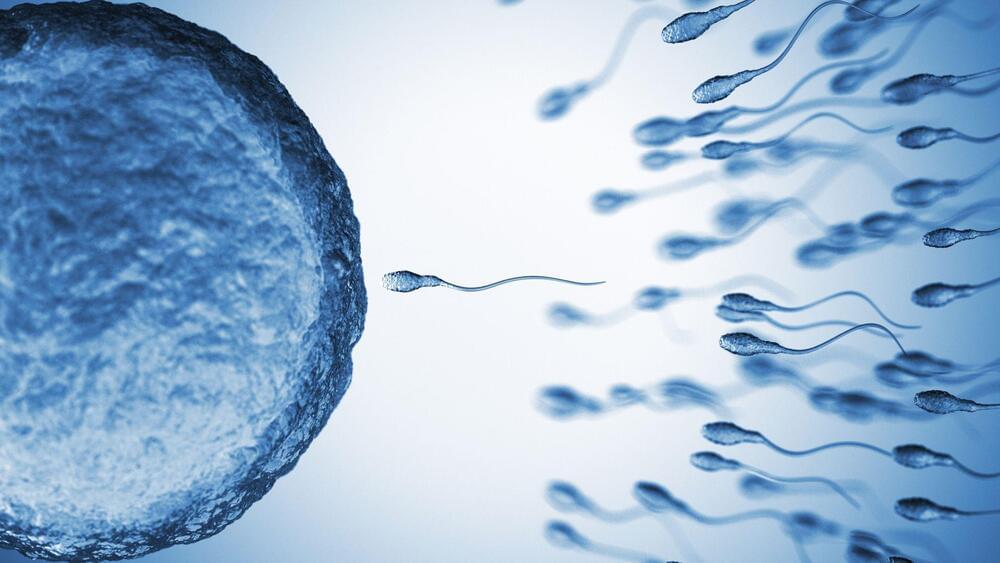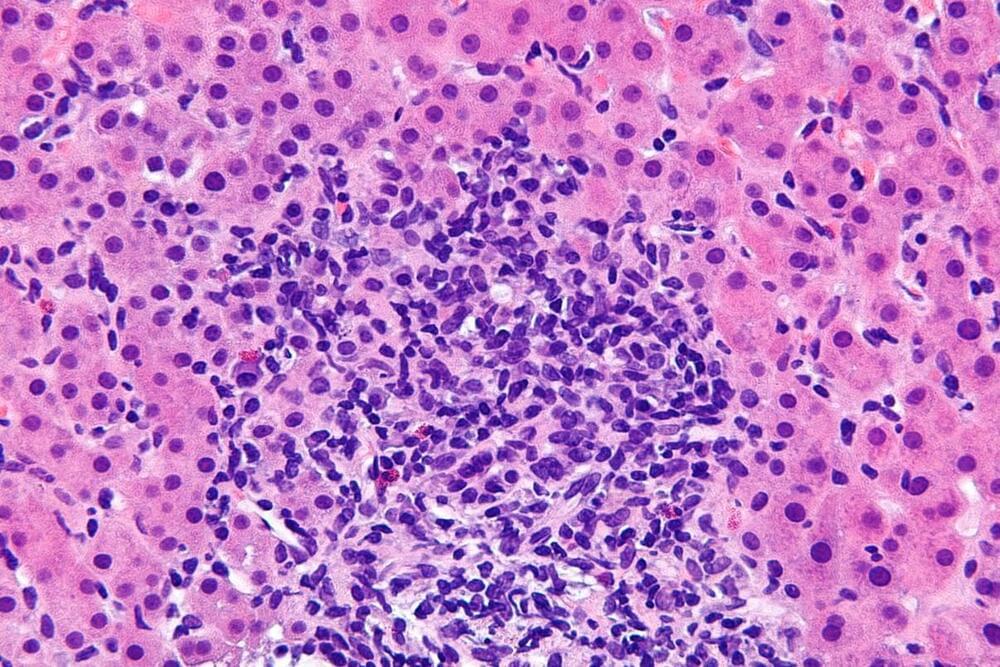Result reveals for the first time how some cephalopods determine sex.



Stanford researchers developed an AI model that identifies sex differences in brain activity with 90% accuracy, shedding light on neuropsychiatric conditions. This breakthrough, leveraging rsfMRI data, highlights significant brain function variances between men and women, offering new insights for personalized treatment.

Although the interplay between sex and mental health is well-studied, a new study suggests there may be a complex correlation between seemingly disparate disorders.
In a new paper published in the Journal of Affective Disorders Reports, a group of Italian psychology researchers say they’ve found a correlation between attention-deficit/hyperactivity disorder (ADHD), depressive symptoms, hypomania (the clinical term for “mania” or high energy) and hypersexuality, or an intense preoccupation with sexual thoughts and acts — and that people who experience these sets of symptoms may use sex as a sort of “self-medication.”
Study coauthors Giacomo Ciocca, a sexual psychology assistant professor at Rome’s Sapienza University, and Davide Doroldi, a clinical psychologist, told PsyPost that they were inspired to look into the possible link after observing higher rates of hypersexuality among people with ADHD.

A study involving long-term acute lymphoblastic leukemia (ALL) survivors found certain genetic variants related to the folate pathway, glucocorticoid regulation, and other factors were associated with impaired attention, motor skills, memory, and more. Read the article here:
Genetic predispositions may modulate risk for developing neurocognitive late effects in childhood acute lymphoblastic leukemia (ALL) survivors.
Methods.
Long-term ALL survivors (n = 212; mean = 14.3 [SD = 4.77] years; 49% female) treated with chemotherapy completed neurocognitive testing and task-based functional neuroimaging. Based on previous work from our team, genetic variants related to the folate pathway, glucocorticoid regulation, drug metabolism, oxidative stress, and attention were included as predictors of neurocognitive performance, using multivariable models adjusted for age, race, and sex. Subsequent analyses evaluated the impact of these variants on task-based functional neuroimaging. Statistical tests were 2-sided.

Summary: Researchers developed an artificial intelligence model that accurately determines the sex of individuals based on brain scans, with over 90% success. This breakthrough supports the theory that significant sex differences in brain organization exist, challenging long-standing controversies.
The AI model focused on dynamic MRI scans, identifying specific brain networks—such as the default mode, striatum, and limbic networks—as critical in distinguishing male from female brains.
This research not only deepens our understanding of brain development and aging but also opens new avenues for addressing sex-specific vulnerabilities in psychiatric and neurological disorders.

The team found that administering an HDAC inhibitor orally effectively halted sperm production and fertility in mice while preserving the sex drive.
Researchers are grappling with the challenge of developing effective male contraceptives as existing attempts to block sperm production, maturation, or fertilization have fallen short, either offering incomplete protection or leading to severe side effects.
Now, a team of researchers at the Salk Institute in the US has developed a novel approach to halting sperm production, which is both non-hormonal and reversible, marking a significant advancement in male contraception research.
Researchers have identified a novel protein complex governing gene expression in sperm production. By administering an existing class of drugs, called HDAC (histone deacetylase) inhibitors to male mice, they effectively disrupt this complex, leading to infertility without impacting libido. This breakthrough suggests a promising avenue for non-hormonal and reversible male contraception, according to the team.

Women are more likely than men to have conditions such as lupus, rheumatoid arthritis, and autoimmune hepatitis (depicted above in a cellular micrograph), in which their immune response attacks healthy, functioning parts of their body. Yet the reason behind this sex-based imbalance has long eluded scientists. Now, a study published last week in proposes that a molecule associated with the X chromosome may be partly to blame. Researchers noticed that many of the proteins commonly targeted by the immune system in people with autoimmune diseases had something in common: They help a molecule called Xist carry out its function. Xist molecules act a bit like quality control inspectors for women’s extra X chromosomes, preventing them from producing a toxic amount of proteins. The scientists suspect that when immune cells encounter large bunches of these Xist-related proteins—for instance, when a dead cell spills them into the bloodstream—they may react by making antibodies to attack them throughout the body. To test the idea, the team studied genetically engineered mice in which both males and females produced Xist. Like their female counterparts, these males were also at an increased risk of developing severe cases of lupus. The researchers also found that people with autoimmune disorders had more antibodies for Xist-related proteins in their blood. Still, Xist molecules may not be the only factor at play: Experts note that some people produce these Xist-related antibodies without developing autoimmune disorders, reports.

according to a retrospective cohort study.
Poor vision is associated with risks for falls and fractures, but details about risks associated with specific eye diseases are less clear. In this retrospective U.K. cohort study, researchers identified nearly 600,000 patients (mean age, 74) with cataracts, glaucoma, or age-related macular degeneration (AMD) and compared them with age-and sex-matched control patients who did not have eye diseases. Falls and fractures were tracked for a median of about 4 years. Analyses were adjusted for a wide range of chronic diseases and medications that increase risk for falls.
Compared with controls, patients with eye diseases had significantly higher hazard ratios for falls and fractures: HRs ranged from 1.18 to 1.38 for the three eye-disease groups. The incidence rates for falls per 100,000 person-years were about 1,800 to 2,500 for the three eye-disease groups, compared with 620 to 850 for control groups. For fractures, the corresponding incidence rates for the three eye-disease groups were 970 to 1,290, compared with 380 to 500 for control groups.
The absolute and relative risks for falls and fractures were similar for all 3 eye-disease groups. An unexplained fall, particularly an injurious one, should prompt primary care clinicians to explore visual impairment as a potential cause or contributing factor.
Every year I compile what I think were some important contributions to longevity research. Here is my list for 2023.\
\
Find me on Twitter — / eleanorsheekey \
\
Support the channel \
through PayPal — https://paypal.me/sheekeyscience?coun… \
through Patreon — / thesheekeyscienceshow \
\
Intro — 00:00\
\
What causes aging? — 00:32\
Hallmarks Of Aging: An Expanding Universe \
The DREAM Complex Functions As Conserved Master Regulator Of Somatic DNA-Repair Capacities \
\
Biomarkers — 02:00\
The Aging Biomarker Consortium Represents A New Era For Aging Research In China\
Longitudinal fundus imaging and its genome-wide association analysis provide evidence for a human retinal aging clock\
A Foundation Model For Generalizable Disease Detection From Retinal Images\
\
Cellular reprogramming — 04:30\
Chemically induced reprogramming to reverse cellular aging\
Loss of epigenetic information as a cause of mammalian aging\
In vivo reprogramming leads to premature death linked to hepatic and intestinal failure\
\
Lifespan extension — 07:30\
Astaxanthin and meclizine extend lifespan in UM-HET3 male mice; fisetin, SG1002 (hydrogen sulfide donor), dimethyl fumarate, mycophenolic acid, and 4-phenylbutyrate do not significantly affect lifespan in either sex at the doses and schedules used\
Taurine deficiency as a driver of aging\
Dietary supplementation of clinically utilized PI3K p110α inhibitor extends the lifespan of male and female mice\
Optogenetic Rejuvenation Of Mitochondrial Membrane Potential Extends C. Elegans Lifespan\
Reversal Of Biological Age In Multiple Rat Organs By Young Porcine Plasma Fraction\
Multi-Omic Rejuvenation And Life Span Extension On Exposure To Youthful Circulation\
\
Biotechnology — 13:50\
Intravascularly infused extracellular matrix as a biomaterial for targeting and treating inflamed tissues\
Intradermally delivered mRNA-encapsulating extracellular vesicles for collagen-replacement therapy\
\
Why we age — 15:15\
Ageing as a software design flaw\
The Longevity Bottleneck Hypothesis: Could Dinosaurs Have Shaped Ageing In Present‐Day Mammals?\
Reconsidering Life History Theory Amid Infectious Diseases\
Blood Group A Enhances SARS-CoV-2 Infection\
\
What’s next? — 16:50\
\
There are many items missing from this list — these are only the papers I found time to read. Please post below any I missed! \
\
ICYMI\
\
2022 longevity papers\
\
2021 longevity papers\
\
Please note that The Sheekey Science Show is distinct from Eleanor Sheekey’s teaching and research roles at the University of Cambridge. The information provided in this show is not medical advice, nor should it be taken or applied as a replacement for medical advice. The Sheekey Science Show and guests assume no liability for the application of the information discussed.\
\
Icons in intro; \.

Board directors and CEO’s need to increase their knowledge of Deep Fakes and develop risk management strategies to protect their companies. Deepfakes are videos or images that often feature people who have been digitally altered, whether it be their voice, face or body, so that they appear to be “saying” something else or are someone else entirely.
You may recall the trickery of the video in 2019 showing Tesla cars crashing into a robot at tech convention causing havoc or of Wayfair false information involved in child sex trafficking through the sale of industrial cabinets. Even Mark Zuckerberg has been inflicted by deep fakes from a video where he was allegedly thanking U.S. legislators for their inaction on antitrust issues.
Unfortunately, deep fakes are incredibly easy to produce having gone mainstream and with AI, there are even more accelerated risks to plan for.